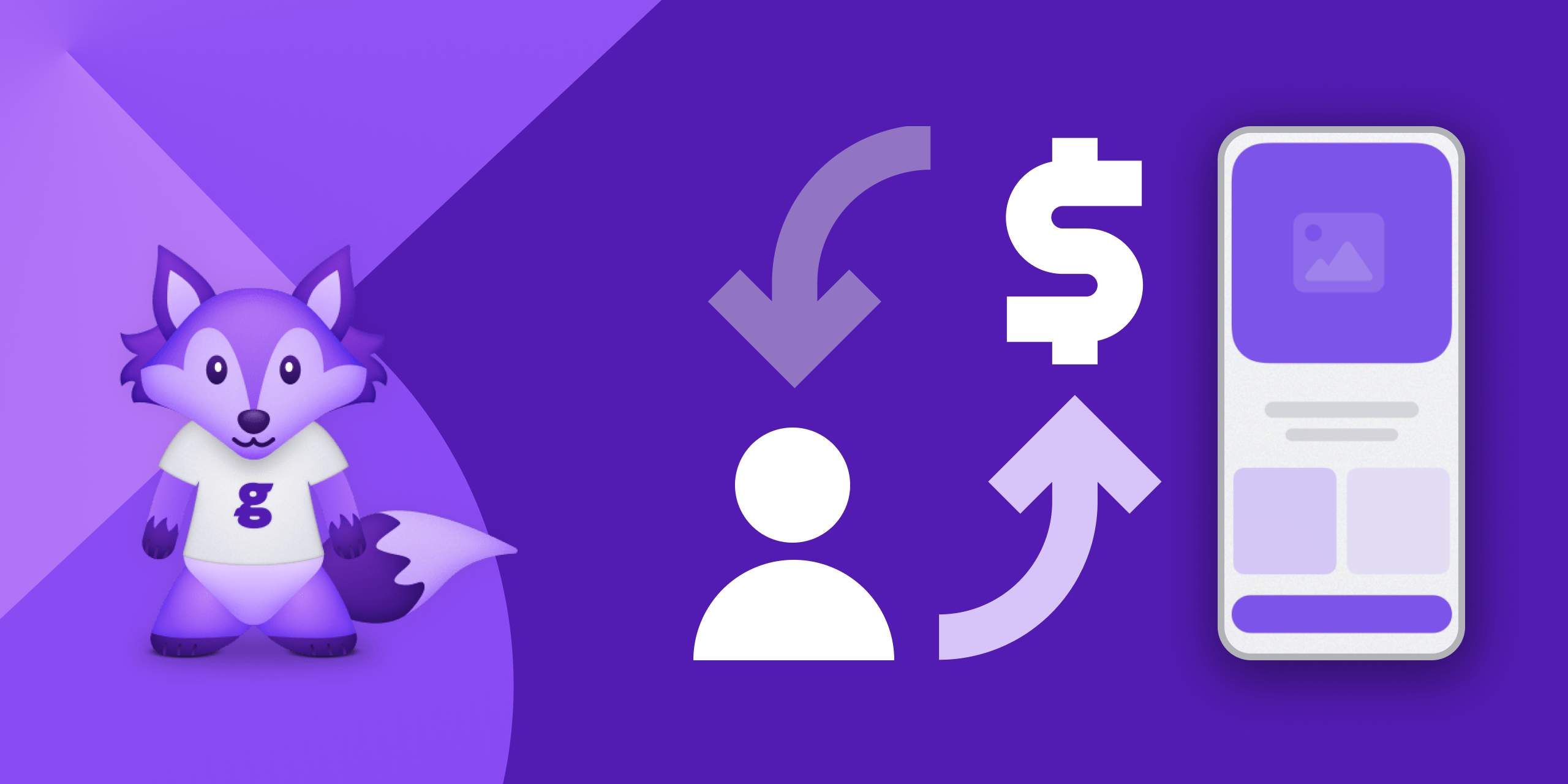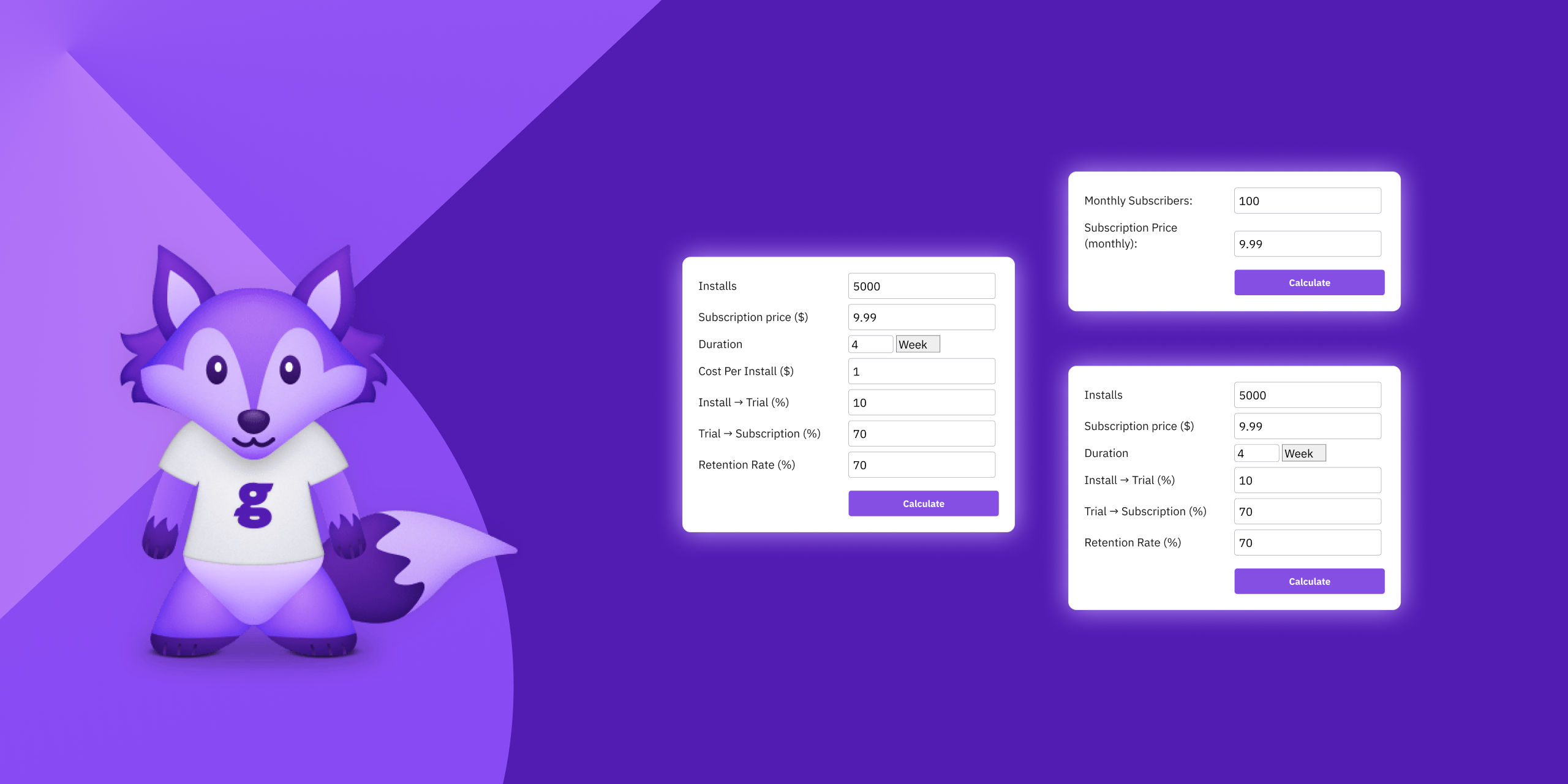Content
Monitoring your subscriptions: Where to start

Monitoring key metrics is critical to tracking performance and improving your app. But you are already well aware of this! What you might not be sure about is which metrics to monitor to start with. Here we will go through the most important–and basic–metrics you should monitor when you begin monetizing your app with in-app subscriptions. In future posts, we will go through more advanced metrics you should monitor at a more advanced stage.
Let’s start with core metrics on your subscriptions…
Active Subscriptions: Total number of active subscriptions–currently active or in grace period. It doesn’t include free trials, as they have the permission to use the app but didn’t pay yet.
You need to have a clear picture of how many active subscriptions you currently have, in real-time, but also have visibility on the recent trend. For simplicity, let’s say the last 28-day period is a good timeframe.
If there is one non-financial metric you have to prioritize, I’d suggest Active Subscriptions. It is a thermometer not only of your app’s success with users–Do they stick around? Do they grow? Do you have to worry? Are they declining?–but also of your future financial success: Active Subscriptions are the ground for renewals and future revenue.
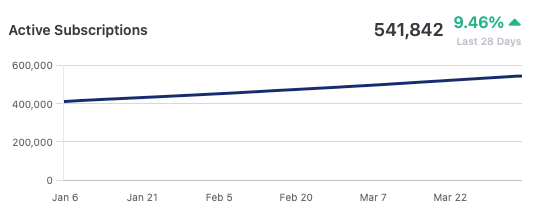
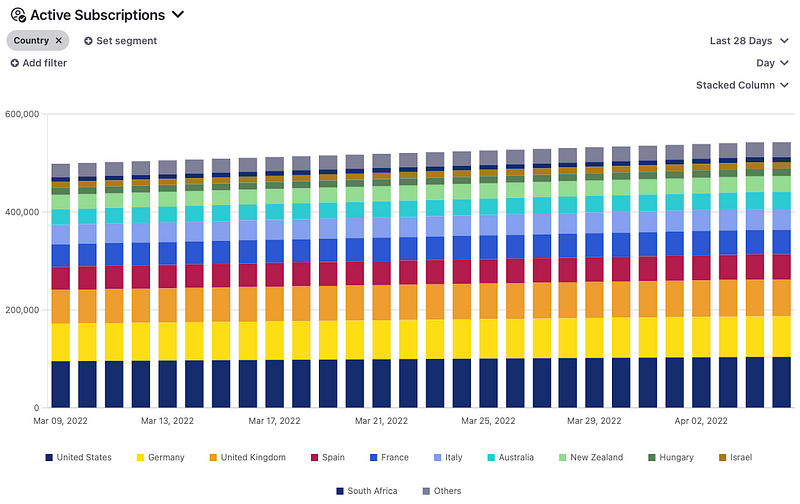
Churn Rate: The percentage of subscribers who discontinue their subscription in a given time period, either because they cancel their subscription or because it expires.
When you have a big enough user base, you will be able to monitor it daily, and any spikes or drops can be easily noticeable. While it’s better to have a churn rate as low as possible, having subscriptions implies dealing with churning subscriptions so don’t panic if your Curn Rate is > 0%.
What you should focus on, is understanding the root causes behind spikes, drops, and trends: What happened? Common causes include changes (improvements hopefully) on the product, seasonality, featuring on the AppStore or PlayStore, word-of-mouth from very influencing ambassadors, and changes in users acquisition campaigns.
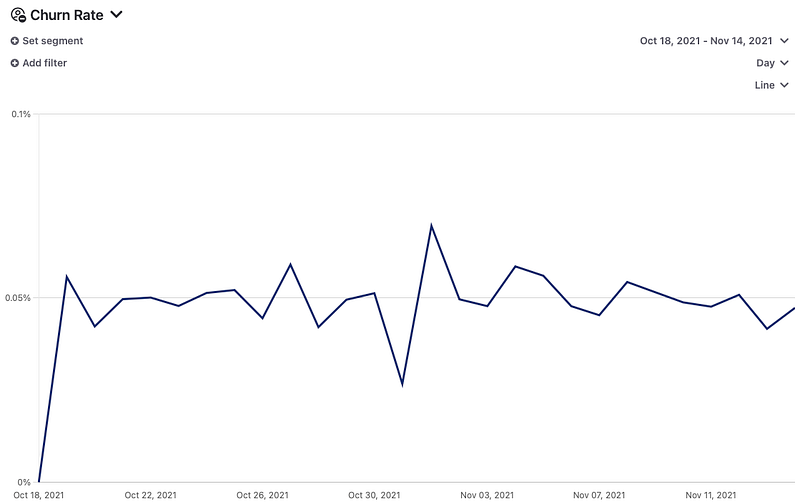
New Subscriptions: Number of new subscriptions starting in a specific time period. It doesn’t include renewal, nor Restarted Subscriptions that we will see another time. It includes subscriptions that are starting from scratch, or Free Trials converting into paid subscriptions.
Compared to the previous metrics, on New Subscriptions you have to pay special attention to the trend more than a single day: spikes and drops in New Subscriptions are more common, based on your app seasonality, user base, and acquisitions campaigns. What is important is that you can understand the trend, and there are no unexpected drops. If you are lucky and there are unexpected spikes, take the time to investigate them! You will likely find a new lever to grow your app, that you have not expected.
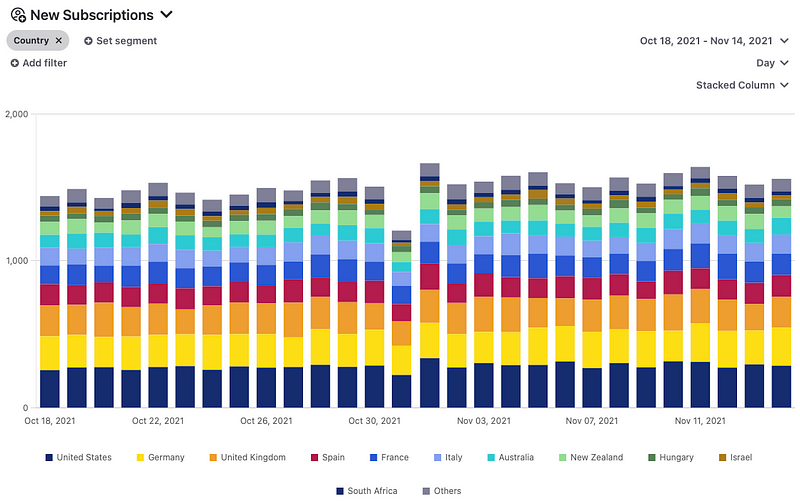
…that leads to revenue…
Revenue: Total amount of gross revenue generated in a specific time period, before the platforms’ cut–that will vary based on a multitude of factors including platform, category, year of subscription, and your previous year revenue.
It goes without saying, revenue is the first basic metric you must have under control. Spikes and drops are common, especially at early stages so try to always look at trends and be in control of what’s happening.
Pricing and subscription periods also have a huge impact on your revenue, and switching or promoting different subscription periods can have a huge impact on your revenue stream–e.g., from monthly to yearly can boost your short-term revenue and show steady growth, but the same growth rate can be difficult to sustain later on–it all depends on your monetization strategy and needs.
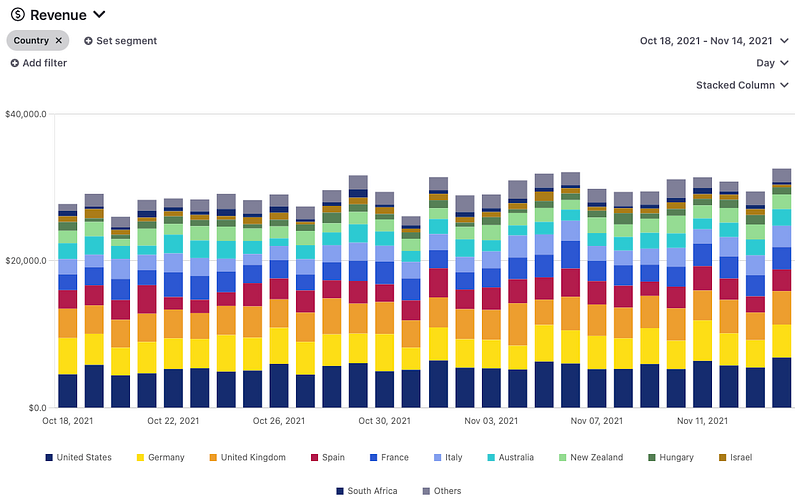
Monthly Recurring Revenue (MRR): is the sum of recurring revenue normalized into a monthly amount. Recurring revenue includes subscriptions, but not one-time purchases–here is more info on types of iOS in-app purchases. As defined by Investopedia:
Recurring revenue is the portion of a company’s revenue that is expected to continue in the future. Unlike one-off sales, these revenues are predictable, stable, and can be counted on to occur at regular intervals going forward with a relatively high degree of certainty.
For example, the payment of an annual subscription will generate revenue only on Month 1 (e.g., $120), while MRR will normalize that amount for each month the subscription is active (e.g., $10 for each month).
Therefore, this chart can be even more important than revenue when you want to have a clear picture of how your app is performing, in terms of growth and expectations for future trends.
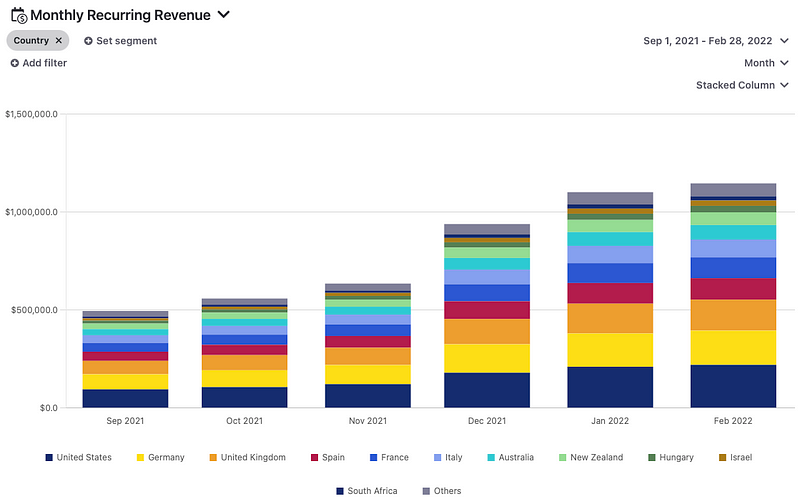
…and the seeds you plant for future subscriptions…
New Trial–if available: Total number of new trials started in a specific time period. It accounts only for free trials, which for sure you hope they will convert at the end of the trial.
You might not offer users a free trial before starting a subscription, or users might choose an option without a free trial. It’s optional, but consider it properly as it makes sense for a lot of subscription-based apps. And if you offer a free trial, it is a very important metric to monitor.
While New Subscriptions give you a better view of new paying subscriptions, New Trials are the seeds that will (hopefully) convert in the near future. Quoting an old saying:
Don’t judge each day by the harvest you reap but by the seeds that you plant
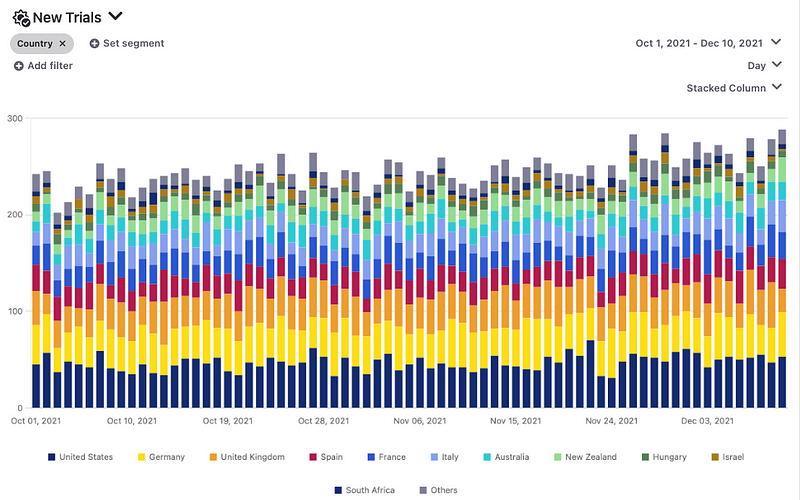
Time to put into practice
Do you have all of the above charts under control? It’s surprising that app stores–both Apple and Google–don’t easily provide all of these metrics to developers and publishers. And I never expected such metrics to be actually so complex to be calculated from app stores subscription events! But this is another topic.
Still reading? If you find it useful, feel free to have a look at Glassfy! We provide these–and much more advanced–metrics to our users transparently on a beautiful dashboard, and also on more detailed charts where you can filter by country, in-app purchase, currency, and more.
Read More

